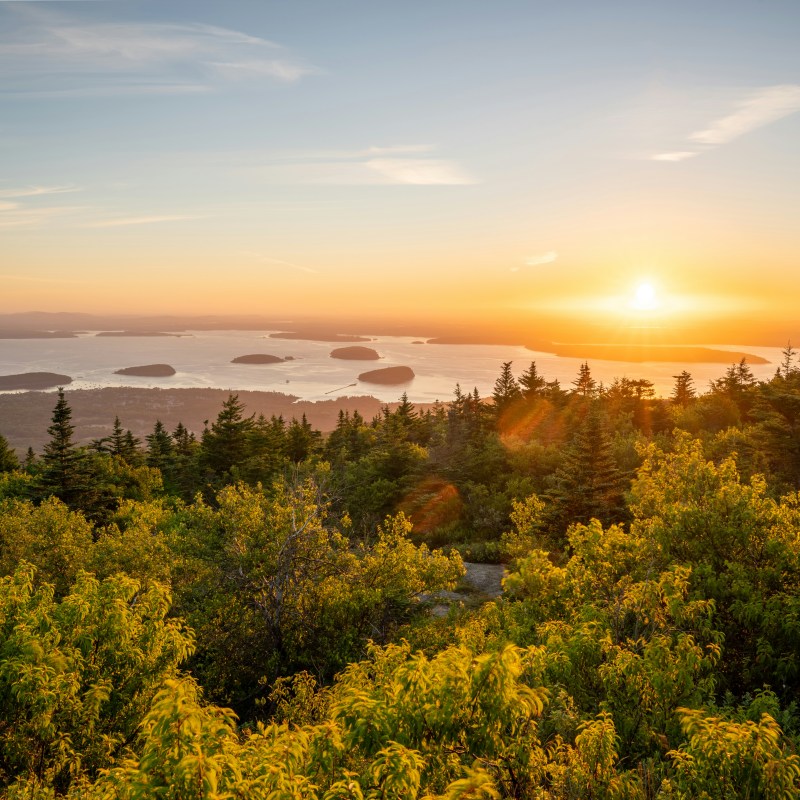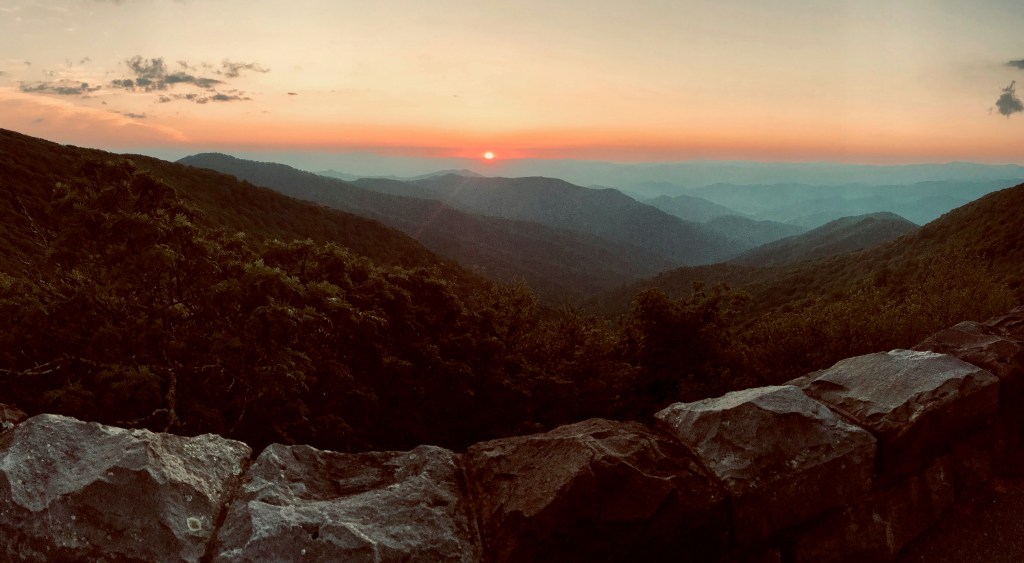
If you closed your eyes and imagined the most magical forest in the continental US, you’d probably see a West Coast location.
Videos by TravelAwaits
Maybe you’re picturing the sky-scraper-esque sequoias of Northern California or the ripe-green cloud forests of Washington State.
You aren’t alone if that’s the case. Despite the fact that national parks can be found in every US state, we assign them into different categories.
When it comes to the East Coast, most people associate its forests with autumn. (I blame the Gilmore Girls.)
Though autumn sees great displays of slowly dying leaves and multi-color canopies, East Coast forests are just as stunning in the spring and summer.
From the Atlantic corridor to the Appalachian mountains, national parks on the East Coast are home to waterfalls, towering trees, and thousands of miles of hiking paths—and most are accessible from major cities.
But do you know which National Parks and forests are actually worth visiting? I’ve ranked some of my top choices for the East Coast’s most magical forests, from Maine down to South Carolina.
Acadia National Park, Maine
The National Parks Service calls Acadia the Crown Jewel of the North Atlantic Coast. Part of its charm comes from its old-fashioned motor road trails and carriage roads.
But Acadia’s front-runner is its natural wonders. Quaint marshlands mingle with tall coniferous forests, which are interspersed with rocky outcroppings. Due to its northern climate, it’s definitely one of the more rugged national parks on the East Coast.
You’ll also notice initiatives between the National Park Service and the native Wabanaki people, which have launched projects based on traditional ecological knowledge in recent years.
In short: there’s a huge interest in preserving this park, and it shows.
Heading there? Check out these top-rated spots.
- Modern House, Woodward Heights, Maine
- Pond Hill, Somesville, Maine
White Mountain National Forest, New Hampshire
New Hampshire rarely gets attention for its natural splendor—even if most of the state is covered in trees. White Mountain National Forest covers a stretch of 800,000 acres of undisturbed forest, lakes, streams, and fields.
I recommend visiting in late summer or early autumn, as this region is renowned around the world for its displays of colorful foliage. Or, if you’re a fan of winter sports, you can also take advantage of the park’s skiing trails (both downhill and cross country) and snow-shoe trails.
Here are some of the highest-rated lodgings nearby:
- The Inn at Thorn Hill, Jackson, New Hampshire
- Conway Retreat, North Conway, New Hampshire
Pinelands National Reserve, New Jersey
Nobody thinks about nature when they think about New Jersey. But did you know that this state is home to the largest forested area on the Eastern Seaboard?
Enter the legendary pine barrens, which span 1.1 million acres. You read that correctly. 1.1 million. This area is preserved because of its unique ecology.
Here’s the short of it: pines and other sturdy fauna adapted to low-quality soil in this area over the course of millions of years. That means much of the local flora and fauna doesn’t exist anywhere else in the world, including carnivorous plants like the pitcher plant.
Pinelands national reserve is weird enough to have its own cryptid legend, too. The New Jersey Devil is a mythic beast that dwells within the Pine Barrens. (Yes, this is where the state’s NHL team got its name.)
If you’re thinking of visiting, this national reserve is only a two-hour drive from hotspots like New York City and DC.

Shenandoah National Park, Virginia
Shenandoah National Park is another reachable gem from big cities like Washington DC. You’ve probably heard of this famous park before, immortalized in songs like ‘Take Me Home, Country Roads’.
Shenandoah is home to stretching Appalachian hills that extend into a misted horizon. Aside from the forest’s magical wonders, there’s one big reason this park is worth visiting: it’s designed for hosting all types of visitors.
Similar to Acadia, the Shenandoah National Park Association has done a crack job of preserving its natural wonders while also marking trails, campsites, and swimmable ponds for guests. If I had to choose from the parks on this list, Shenandoah would be my choice thanks to its accessibility and amenities.
Just make sure to reserve your place at this park’s campgrounds ahead of time—they’ll fill up fast. Or if you’ve missed your window, consider lodging at one of these top-rated spots:
- The Cottages, Etlan, Virginia
- West Park Gardens, Culpeper, Virginia
Congaree National Park, South Carolina
Forget the lackluster soil quality in the pine barrens. Further south, South Carolina is home to floodplains that deposit sediment from further inland.
Thanks to this annual flooding, Congaree National Park’s old-growth forests receive plenty of nutrients that keep its marshlands healthy.
This national park has been high on my list for a long time. Not only are the trails beautiful and well-maintained, but there are also fully remote campgrounds.
I imagine this park is dense with mosquitoes, so I might pass on the camping. But I’m impressed with the park management’s website—it’s more functional and helpful than others.
Planning a visit? Check out these hotels and lodgings.
- Cute n’Comfy Capers, Columbia, South Carolina
- Hotel Trundle, Columbia, South Carolina
